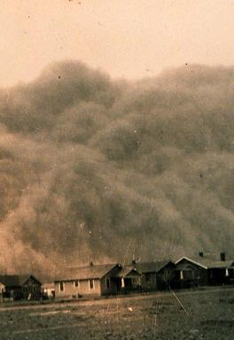NOAA/WDS Paleoclimatology - Western Kentucky LGM Peoria Loess Gastropod Data and July Temperature
This archived Paleoclimatology Study is available from the NOAA National Centers for Environmental Information (NCEI), under the World Data Service (WDS) for Paleoclimatology. The associated NCEI study type is Loess and Eolian Dust. The data include parameters of loess and paleosol with a geographic location of Kentucky, United States Of America. The time period coverage is from 30173 to 24523 in calendar years before present (BP). See metadata information for parameter and study location details. Please cite this study when using the data.
- Cite as: Grimley, D.A.; Counts, R.C.; Conroy, J.L.; Wang, H.; Dendy, S.N.; Nield, C.B. (2021-08-31): NOAA/WDS Paleoclimatology - Western Kentucky LGM Peoria Loess Gastropod Data and July Temperature. [indicate subset used]. NOAA National Centers for Environmental Information. https://doi.org/10.25921/9945-3078. Accessed [date].
- Please refer to Credit tab for full citation information.
- doi:10.25921/9945-3078
- noaa-loess-34072
- NCEI DSI 1200_02
- NCEI DSI 1200_01
noaa-loess-34072
| Search Data |
|
| Download Data |
|
| Distribution Formats |
|
| Ordering Instructions | Contact NCEI for other distribution options and instructions. |
| Distributor | NOAA National Centers for Environmental Information
ncei.info@noaa.gov |
| Dataset Point of Contact | NOAA National Centers for Environmental Information
ncei.info@noaa.gov |
| Dataset Point of Contact | Data Center Contact
NOAA World Data Service for Paleoclimatology 828-271-4800 paleo@noaa.gov |
| Coverage Description | Date Range: 30173 cal yr BP to 24523 cal yr BP; |
| Time Period | -28223 to -22573 |
| Spatial Bounding Box Coordinates |
N: 37.67708
S: 37.67708
E: -88.09786
W: -88.09786
|
| Spatial Coverage Map | |
| General Documentation |
|
| Associated Resources |
|
| Publication Dates |
|
| Data Presentation Form | Digital table - digital representation of facts or figures systematically displayed, especially in columns
|
| Dataset Progress Status | Complete - production of the data has been completed |
| Data Update Frequency | Data update frequency not available |
| Supplemental Information |
STUDY NOTES: Terrestrial gastropod assemblage and stable isotope (d13C, d18O) data and July temperature estimates from Peoria Loess of The Rocks section, western Kentucky, for the Last Glacial Maximum (~30-24ka)
ABSTRACT SUPPLIED BY ORIGINATOR: The Rocks loess section, in unglaciated western Kentucky, provides a high-resolution environmental record during the last glacial maximum onset. The Peoria Silt (9 m thick) contains 26 terrestrial gastropod species, with up to 15 species within a single 5 cm interval. Thirteen radiocarbon ages, using shells or charcoal, range between 30 and 24.5 cal ka; younger loess has been leached or eroded. Stratigraphic shifts in gastropod assemblages imply significant cooling, particularly ~27 cal ka, as solar insolation was decreasing and the southern Laurentide Ice Sheet rapidly advancing. Midwestern to southern species (e.g. Anguispira kochi, Gastrocopta pentodon, Hawaii miniscula, Helicodiscus parallelus, Vallonia perspectiva) occur only in the lowermost Peoria Silt (~30-27 cal ka). In contrast, cold-tolerant species (Columella alticola, Vertigo modesta, Vallonia gracilicosta) occur only in full glacial Peoria Silt (27-24.5 cal ka). Inferred mean July temperatures, from mutual climatic range methods, range from ~23C at 30 cal ka, cooling to ~18C by 26 cal ka; about 3-8C cooler than today (~26C). Superimposed on this cooling trend are multi-centennial variations in detrital carbonate, fossil shell concentrations, palaeotemperature estimates, and oxygen isotope values (Vertigo, Discus, Helicodiscus). The finer-scale variations imply relatively synchronous fluctuations in glacial sediment supply, loess sedimentation, and climate. |
| Purpose | Records of past environment derived from Loess and Eolian dust (silt-sized material deposited on the Earth surface by the surface winds. Parameter keywords describe what was measured in this dataset. Additional summary information can be found in the abstracts of papers listed in the dataset citations. |
| Dataset Citation |
|
| Cited Authors |
|
| Originators |
|
| Publishers |
|
| Theme keywords | Global Change Master Directory (GCMD) Science Keywords
|
| Data Center keywords | Global Change Master Directory (GCMD) Data Center Keywords
|
| Place keywords |
|
| Use Constraints |
|
| Access Constraints |
|
| Fees |
|
Last Modified: 2023-09-01
For questions about the information on this page, please email: ncei.info@noaa.gov
